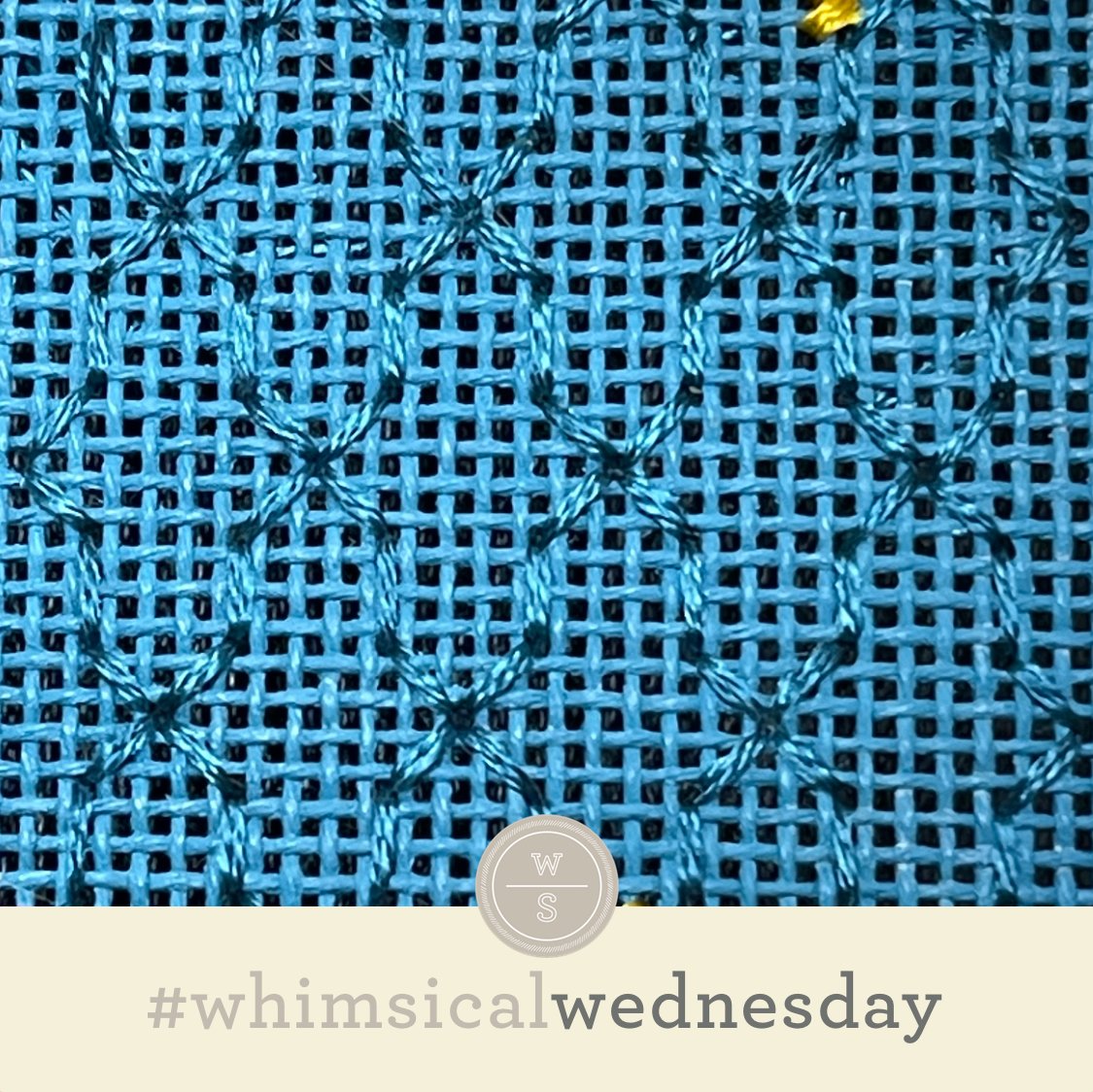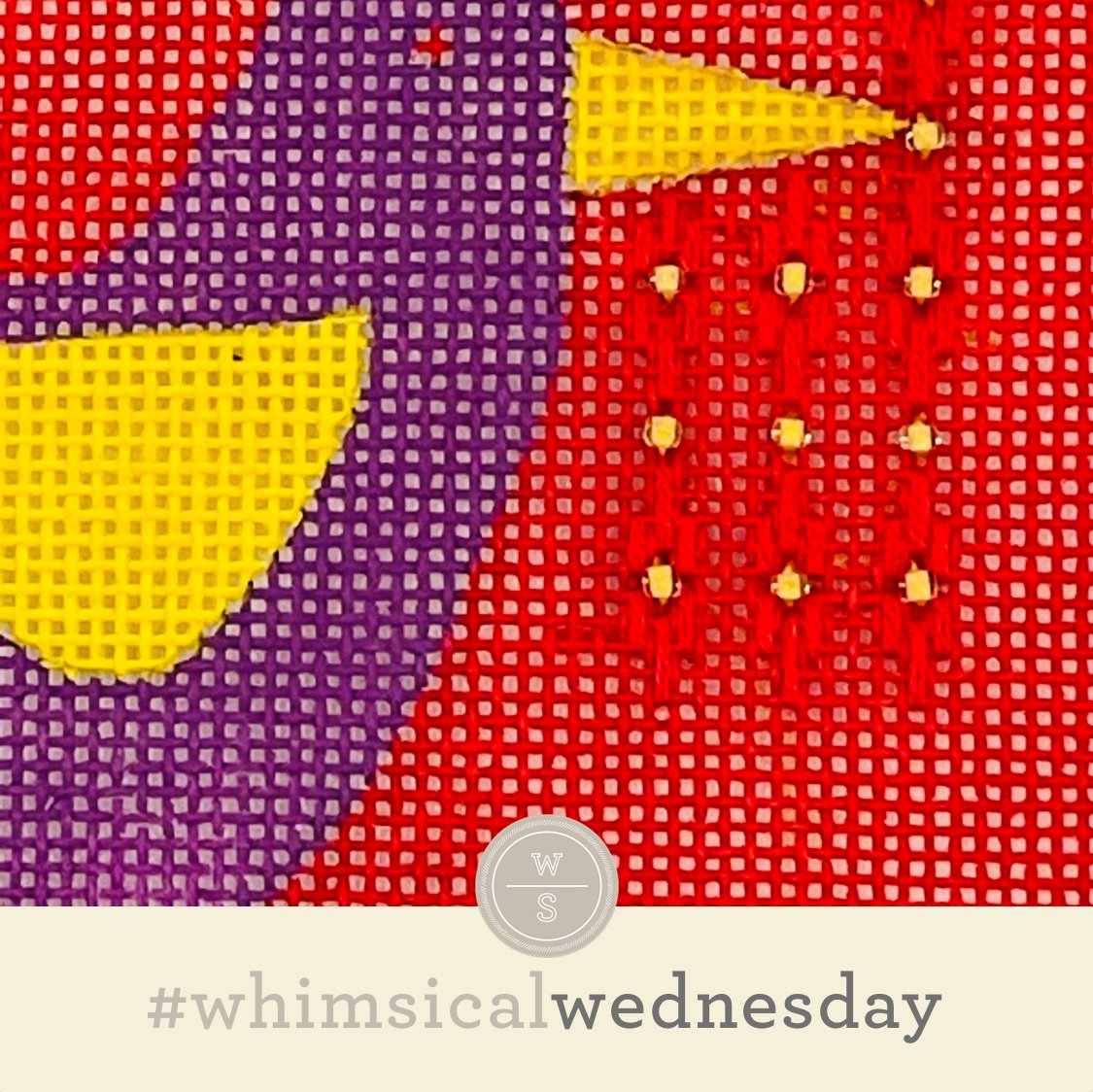Today’s a fun #smallspacesunday. There’s a new stitch for you AND there are also several examples of previous #smallspacesundays. It’s a reunion!
Today’s stitch is a wonderfully simple layered stitch. I love how the color and finish of the accent threads (top threads) change between vertical columns. It’s such a great way to bring attention to an otherwise forgettable area. The stitched sample is the red scarf on an adorable Christmas ornament with Vineyard Silk (gray lines) and a size 8 Kreinik (yellow lines) on 18M.
In addition to today’s stitch, the stitched sample on the far right includes Encroaching Gobelin (blue cap), Upright Crosses (green cap), Woven Hungarian (orange scarf), and Diamonds with Cross Stitches (red cap). This is an ornament I stitched a very long time ago, so the threads I’m about to offer are my best guesses. I used Bella Lusso or Designers Dream (no longer available) for the blue and red caps. I used DMC Floss for the green cap and orange scarf. Sundance Beads are also included on the orange scarp.
Back to today’s new stitch. I love layered stitches and love how this deceptively small one fits perfectly into the scarf area. I’ve used variations of this stitch for other short, wide areas such as the neck of a vase with two colors of Petite Silk Lame. The texture of Rainbow Linen is perfect for trees and roofs. For either of those applications, use the Rainbow LInen for the gray lines and Vineyard Silk for the yellow lines. I would flip the stitch 90° for a roof.
This stitch diagram, along with all other #whimsicalwednesday and #smallspacesunday stitch diagrams, can also be found on a Pinterest board here. Be sure to follow whimsicalstitch.com on Facebook, Pinterest, Instagram, and Twitter.
IIf you like what you see on this blog, there's more: Mary’s Whimsical Stitches Volume 1 is a contemporary how-to collection of more than 250 stitches for stitchers regardless of skill level. The book includes updated and sequenced diagrams from this blog, all-new stitches, and a chapter on the basics of needlepoint; Mary’s Whimsical Stitches Volume 2 features chapters on Balanced, Beading, Diagonal, Layered, Oblique, Small, and Straight stitches.
Also, you can download for free the first chapter from my first book which covers basic needlepoint stitches and stitch compensation techniques along with new top-line information on needlepoint materials and tools, how to handle threads, and other helpful needlepoint resources.
whimsicalstitch.com also sells Stitch Guides and Stitch Concepts for Melissa Shirley Designs, Zecca Designs, Sandra Gilmore, Purple Palm, Maggie, and Penny MacLeod, and many more. Click here to see the newest guides and click here to see the entire collection.
I hope you have the perfect spot for this stitch! Please enjoy! Have a wonderful #whimsicalwednesday!
A Note about Diagrams
I use color in diagrams to make them as clear as possible. The primary function of different colored lines is to illustrate a stitch sequence. For example, layering of colors demonstrates you add them in that order. They can also provide ideas on how to integrate additional threads (one line for each color). Or, you can use the same thread for all color lines. That's where I encourage you to use your imagination for the space you are stitching!
































